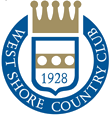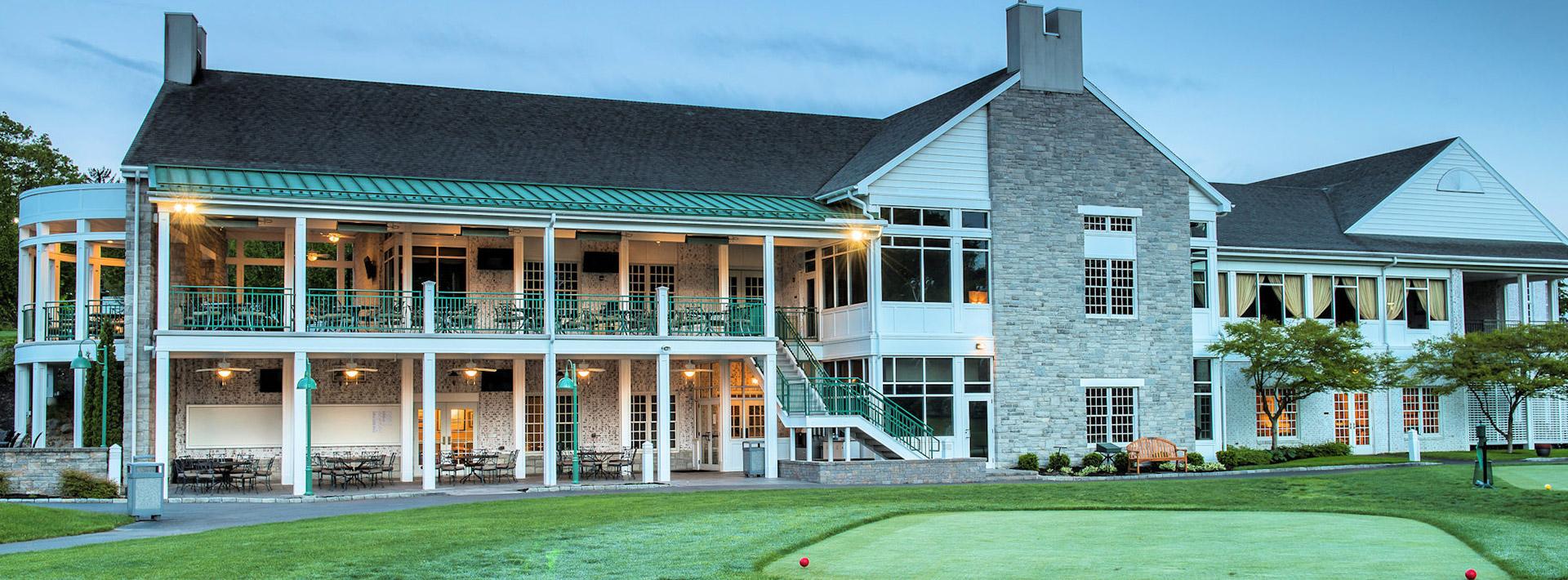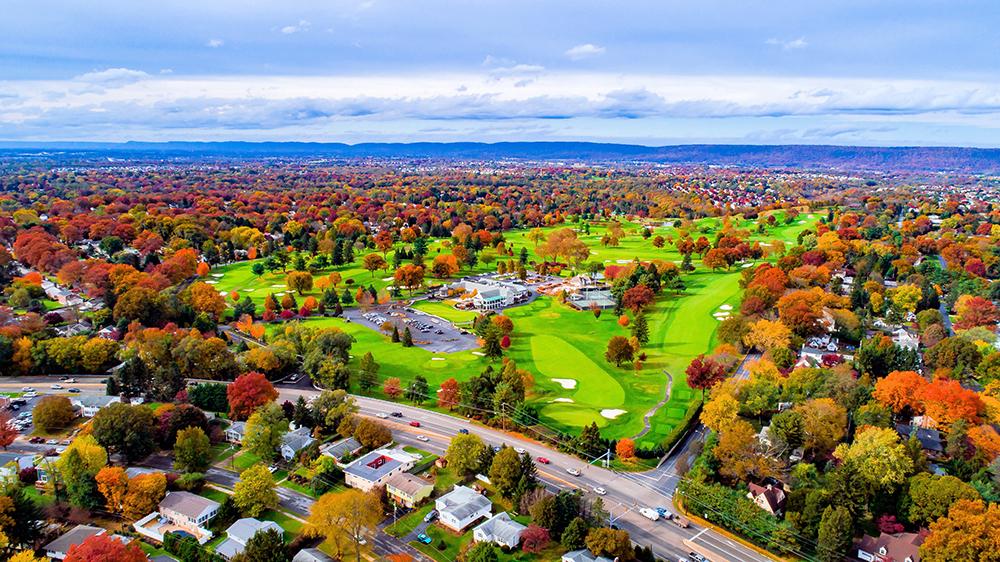
A group of founding Members first met on March 29, 1928 in the Camp Hill Fire House to organize the West Shore Country Club. The Club was granted its Charter on April 30th of that year. The new Club acquired the 69 acre farm of Samuel Bowman along the accompanying farmhouse and barn that had been built in 1821. With the existing farmhouse serving as the Clubhouse, the new Club officially opened on June 14, 1928 with approximately 125 Members.
In the late days of June 1863, the Bowman farm marked the nearest point to Harrisburg — the intended prize — achieved by General Robert E. Lee’s Confederate artillery and cavalry. Late information about Union troop movements led Lee to withdraw and march to the historic confrontation on July 1, 1863 at Gettysburg. The northern-most Union Army soldier wounded was in the West Shore action, a Drummer Boy involved in the “Skirmish at Sporting Hill.“ He is the inspiration for the Drummer Boy emblem of the West Shore Country Club.
Sixty-four years after the Civil War sounds of artillery, the farmland of the old Bowman farm echoed to the sounds of club striking ball on the first three pitch and-putt holes of what is now West Shore’s championship golf course. An expert organizer and fund-raiser, the Club’s first President, Franklin Davies, used those talents to rally members in expediting the organization, financing and initial land acquisition. The entrance fee for Membership was the purchase of a $100 share of stock in the Club, and annual dues were set at $35.
In 1929, the course expanded to five holes, and in the third year it consisted of nine holes. These first nine holes were designed by George Morris, who designed the original Colonial Country Club and had linage to the famous Scottish Morris golfing family. In 1935, the Club purchased 95 adjacent acres and constructed another nine holes that opened in 1938. The old barn was the scene of summertime social activities, with winter events staged at the Penn Harris Hotel in downtown Harrisburg. In 1940, a ballroom and men’s locker room were added to the old farmhouse.
In 1943, Ed Tabor arrived from Wanango Country Club in northwestern Pennsylvania and took over as golf professional and golf course superintendent. Tabor had worked alongside Wanango’s golf course superintendent John Davidson who had been a senior foreman for the famous golf course architect Donald Ross. Tabor applied the Donald Ross style to his next decades of reconstructing, redesigning, and reshaping West Shore’s greens and fairways. In most ways, the Course today remains much the same as Ed Tabor left it except for the two-year redesign, reconstruction, and placement of bunkers by noted golf course architect Gil Hanse completed in the spring of 2004.
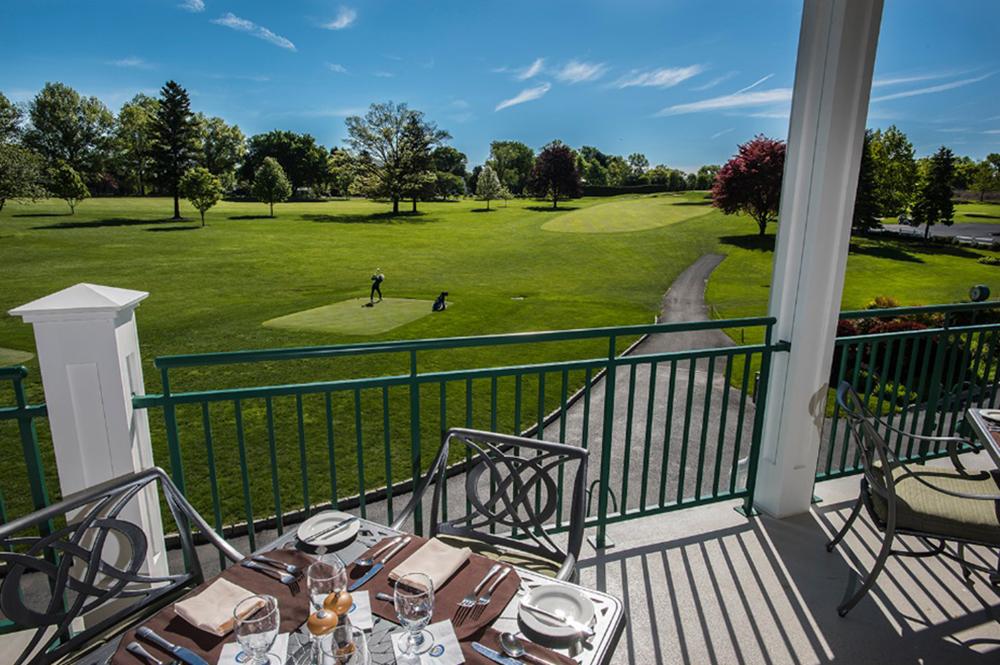
1948 saw the installation of a kitchen, dining room and women’s locker room. In 1950, the ballroom and men’s locker room were enlarged. 1955 brought the construction of the first swimming pool and the installation of air conditioning. In 1958, the Clubhouse was enlarged with a new wing that included more dining areas, a new pro shop and new women’s lounge and locker room. The golf course got a much-needed boost in 1965 with the installation of a fairway watering system, and in 1973 the Club constructed four tennis courts.
1969 featured a visit to West Shore by golf’s “King”, Arnold Palmer. It was actually his second visit to the Club. Palmer played an exhibition round as a fundraising event for the Camp Hill High School Marching Band.
In 1979, Bob Nickey succeeded Ed Tabor as the Head Golf Professional. That year, the Members rallied in August to help clear the Club property of hundreds of trees felled by a violent thunderstorm. The effort enabled the annual Ed Tabor Tournament to be held uninterrupted. Restoration of the property continued until winter.
“Your leisure time is pleasure time” was the motto emblazoned on Club logoed items during the 1970’s.
Throughout the next decade, the Club invested a million dollars in beautification and capital projects. Of some significance was the success of the West Shore Swim team that went undefeated in 1986 and 1987. Of lesser note was the installation of 20 Purple Martin birdhouses on the property with the hope that it would halt the summer invasion of gnats. The idea’s success is recognized by the absence today of birdhouses on the property. An original painting of the Club property was presented to the Club by George C. Hoopy whose family had initially acquired the farm from the Samuel Bowman family. The painting is now on display near the Ballroom.
In 1993, the Club approved a plan to construct an enlarged million-dollar swimming pool on the grounds near the tennis courts, and immediately after Labor Day the old pool was demolished. The opening of the new pool took place in May of 1994. 1995 marked the end of the “male members only” policy of the Club as the full Membership of the Club voted to delete all references to gender in the Club’s Rules and By-Laws. In 1996, all of the outstanding original shares in the initial 1928 stock offering were recalled and redeemed. Longtime former Club Professional Ed Tabor passed away in 1997.
In 1998, the Active members voted to approve the employment of an architect for the Clubhouse building project. In July of 1999, ground was “broken” for the new Clubhouse, and it was officially opened on November 4, 2001. An extensive Bunker Renovation Plan designed by golf course architect Gil Hanse was approved by the Active Members in July 2002. The project was begun in the fall of 2002 and was finally completed in the spring of 2004. Hanse would go on to become world-renowned and chosen to design the Olympic Golf Course for the 2016 Rio di-Janeiro Olympics.
In the years since occupying the new Clubhouse and completing the bunker program, considerable emphasis has been placed on beautifying both the golf course and the clubhouse landscaping. During the past seven years over 600 trees have been removed from the golf course, revealing a magnificence that had been obscured for so many years.
In 2008, thanks to a generous bequest by George C. Hoopy, an outside stairway from the main level to the lower entrance level and a furnished patio were constructed. The Hoopy Patio was dedicated in 2009. In 2010, the Active Membership approved replacing the golf course’s 45-year-old irrigation system with one capable of watering all playing surfaces and 80 percent of the rough areas. Despite over 80 inches of rain (double the average annual precipitation), Tanto Irrigation and our grounds crew, led by Golf Course Superintendent Brendon M. Clark, completed the project below budget by August of 2011.
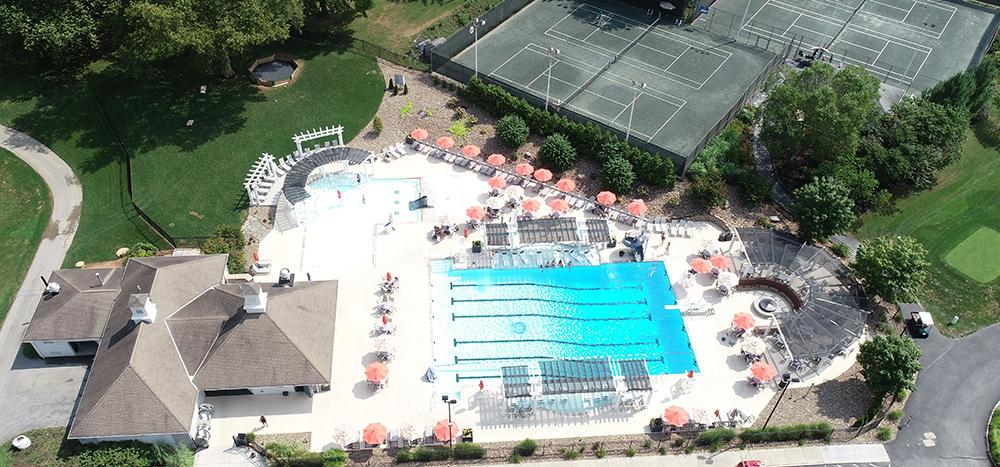
In 2012, the Hearth Room was totally refurbished with elegant new furniture, drapes, and carpeting. New furniture also beautified the pool area. The courtyard was transformed from grass to hardscape, providing an ideal location for member events, wedding ceremonies, charity events or corporate cocktail parties. In 2013 the Active Membership approved a Master Landscape Plan. West Shore, like many courses designed in the “Golden Age”, has experienced problems with aging and dying trees that have been destroyed by storms or had to be removed for safety, agronomic and other reasons. After much deliberation and consultation with our USGA agronomist, we engaged Dan Schlegel to develop a Master Landscape Plan for the golf course. With the Master Landscape Plan we can focus on what we need to do to continue the beautification of the Course with trees and other plantings.
Some years presented challenges. During 2013, we parted company with two General Managers and had to undergo an unforeseen reconstruction of the bridge over the pond at #13. In spite of this, our line managers and volunteer leaders together moved the Club forward. The Club netted a profit and also opened the Esquire Room adjacent the Men’s Locker Room. The Esquire Room, funded by separate member donations, is now a favorite gathering place before and after golf.
After 40 years, PGA Pro Bob Nickey retired in 2016. Bob served as first assistant for several years before succeeding the legendary Ed Tabor in 1979. How do you follow Ed Tabor? Only Bob Nickey could do that with professionalism, kindness, and a sense of humor. The Board of Governors then turned to longtime assistant Todd Love to take over as head golf professional. Todd took the reins in 2017 and we continue to enjoy great golf service and programming.
Sound financial management during recent years have allowed for 2017 renovations to the bar area and the new Shore Room. Members are now enjoying newly refurbished golf course sand bunkers. In 2019, we opened a completely rebuilt and resort style pool complex. All these improvements are aimed at making your West Shore Country Club experience the best in Central Pennsylvania.
Then came March 2020. Just as the prime season was about to arrive, the governor’s COVID restrictions shut the Club down for 41 days. Upon reopening, we endured changes regarding restaurant seating capacity which eliminated our bar service, limited member dining, and halted banquet events. We learned the unusual but necessary practice of putting a mask on to walk in the door. Golfers were subject to one-person carts, greens with no flagsticks, then no touch flagsticks and “pool noodles” in the holes. The swimming pool was forced to reduce capacity and implement reservations and 3-hour time blocks. The swim team took a sabbatical. The swimming membership was subject to social distancing obligations.
However, in 2020, the Club and the game of golf were important outlets for members for whom travel was restricted. Even with no golf during parts of March, April and May, member and total rounds of golf played reached 15-year highs. We managed to hold the Member-Member Tournament and a delayed Member-Guest event. Club Championships were held.
Nimble changes by Rick Newman’s management team coupled with conservative fiscal direction by the Board of Governors saw the Club flourish during a dark period for the hospitality industry. Many members stated that their membership at West Shore Country Club was the most important part of their lives that crazy year, that the Club saved their year, and their children loved the camps and clinics; swimming with Coach Mike and tennis with Coach Riz.
Our Club prospered during the pandemic and moved into 2021 with a greater sense of stability. For the first time since 2006, we reached the cap of Active and Young Professional Members. Debt reduction continued the Club on the path a bright financial future.
In 2021 the Club bid farewell to Chef Mike Barnard who retired after 26 years. Chef Mike’s commitment to culinary excellence in many talks with prospective members noting that West Shore Country Club is “the best restaurant in Central PA and you have to join to be able to dine here.”
Back in 2012, the WSCC Board of Governors adopted the mission statement “It is West Shore Country Club’s mission to provide exceptional country club experiences for families encouraging the formation of enduring friendships by offering personalized service, outstanding facilities, and a sustained commitment to attention to detail, consistency, going beyond expectations.” Focusing on that mission has allowed the Club to flourish in the past and into a bright future.

